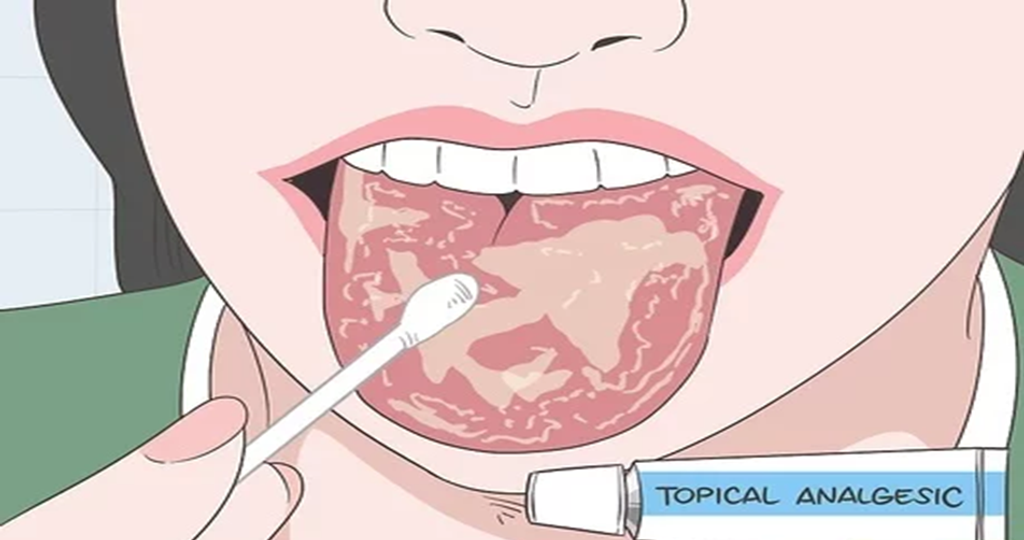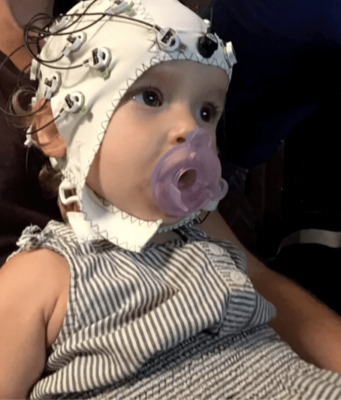Geographic tongue presents as a harmless, persistent, inflammatory condition affecting the oral cavity, with its exact cause remaining unknown. This article focuses on assessing and managing geographic tongue, emphasizing the collaborative efforts of the interprofessional team in its evaluation and treatment. It thoroughly examines the clinical and histopathological aspects, pathogenesis, potential causes, assessment, associated factors, treatment options, and overall management of geographic tongue.
Objectives
- Determine the underlying causes of geographic tongue.
- Assess the most suitable methods for evaluating geographic tongue.
- Present the various management choices for geographic tongue.
- Explain strategies for enhancing care coordination and communication among the interprofessional team to enhance geographic tongue treatment and outcomes.
Introduction on Geographic Tongue
Initially described by Rayer in 1831, the geographic tongue represents a benign chronic inflammatory condition of the oral cavity; the exact cause remains unknown [1]. It is alternatively termed benign migratory glossitis, erythema migrans, annulus migrans, and a wandering tongue rash [1,2,3,4]. Typically, it presents as painless erythematous and migrating circular patches, creating a distinct map-like appearance [1,5]. These patches persist for several days to weeks before vanishing and reappearing elsewhere in the oral cavity [1,6]. While primarily found on the lateral and dorsal aspects of the tongue, extra-lingual lesions may also emerge on the lips, labial and buccal mucosa, and the floor of the mouth [1,2,4]. Geographic tongue exhibits associations with various conditions, leading to diverse theories regarding its pathogenesis.
Etiology
The exact etiology of the geographic tongue remains largely elusive, though several theories have been posited [1,2]. Psychosomatic and hereditary influences have been proposed as potential factors in its development [2]. Redman et al. observed a heightened occurrence of geographic tongue among individuals with mental health issues [7]. Ebrahimi et al. demonstrated a correlation between reduced stress levels and the healing of geographic tongue lesions, further indicating a link between stress and the condition [2]. Additionally, familial and hereditary elements may play a role, with Redman et al. noting a higher prevalence of geographic tongue among first-degree relatives than a control group [1,4]. They also found a notably elevated condition occurrence in parents and siblings compared to the general population, suggesting a potential polygenetic inheritance pattern for this disorder [8].
Epidemiology
The geographic tongue usually begins during childhood, affecting approximately 1% to 2.5% of the global population. In children, its prevalence ranges from 0.37% to 14.3%. The highest occurrence is observed in individuals aged 20 to 29, accounting for around 39.4% of cases. Moreover, geographic tongue exhibits a slightly higher prevalence among women than men [1,2].
Pathophysiology
The origin of the geographic tongue remains elusive to this date; nevertheless, several hypotheses have been proposed [1]. Multiple studies have indicated a connection between geographic tongue and conditions such as asthma, eczema, hay fever, allergic rhinitis, and elevated levels of immunoglobulin E in patients [2,4]. Marks and Tait et al. noted a positive correlation between geographic tongue and asthma and atopy, suggesting a potentially shared pathogenesis for both conditions [2]. Jainkittivong et al. demonstrated a higher prevalence of geographic tongue among patients with allergies to drugs, food, or other substances [9]. Additionally, Miloglu et al. found that 24.1% of patients with geographic tongue had concurrent atopy or allergic disease [10].
Due to the resemblances in clinical presentation, histopathology, and immunohistochemistry between geographic tongue and psoriasis, certain specialists posit geographic tongue as an oral manifestation of psoriasis [2]. Both conditions have been reported to exhibit a strong association with human leukocyte antigen (HLA)–Cw6 and a weaker association with HLA-B13 [2]. However, this association remains contentious, as some argue that compelling evidence is lacking and that geographic tongue and psoriasis may instead occur coincidentally, particularly considering the substantial proportion of healthy individuals who present with geographic tongue [4].
Hormonal influences have been suggested to contribute to the development of geographic tongue [1,2,4]. Wysocky and Daley noted a fourfold increase in the occurrence of geographic tongue among individuals with diabetes [11]. However, conflicting findings exist, as other studies have found no significant correlation between geographic tongue and insulin-dependent diabetes mellitus [2].

The use of oral contraceptive pills, which can cause hormonal fluctuations, has been linked to the geographic tongue, suggesting a potential hormonal involvement in this disorder [2]. Additionally, angiogenesis inhibitors have been implicated in the induction of geographic tongue [2].
Deficiencies in vitamins D, B6, B12, folic acid, iron, and zinc have also been proposed as factors in developing geographic tongue [2,4,12].
Interestingly, tobacco use has been found to exert a protective effect in the pathogenesis of geographic tongue [2]. Smokers exhibit a lower incidence of geographic tongue than nonsmokers, possibly due to increased keratinization and reduced levels of TNF-a, IL-1, and IL-6 by macrophages via activation of nicotinic receptors [12].
Histopathology
Microscopic examination of the white region in the geographic tongue reveals subepithelial infiltrates primarily composed of neutrophils, forming micro-abscesses. Additionally, there is epithelial acanthosis accompanied by elongation of the rete ridges, acantholysis, parakeratosis, glycogen deposits within the epithelial cells, and shedding of necrotic cells in the superficial layer. Histopathological examination of the erythematous area of the lesion may reveal a mononuclear subepithelial infiltrate (primarily consisting of CD4+ T-lymphocytes), supra-papillary hypertrophy, and vascular ectasia [1,2,12]. Electron microscopy shows two types of pathology: the absence of filiform papillae beneath the erythematous region and necrotic cells beneath the white area of the geographic tongue [12].
History and Physical
The clinical presentation of geographic tongue displays variability [1]. Typically, it manifests as asymptomatic erythematous migratory atrophic circinate patches with a loss of filiform papillae encircled by white borders, affecting the lateral and dorsal surfaces of the tongue [3,1]. If these lesions appear in locations other than the tongue, they are termed ectopic geographic tongue [3]. These extra-lingual lesions are rare and may occur on the labial and buccal mucosa, lips, hard palate, uvula, and floor of the mouth [1,3,4,6]. Geographic tongue exhibits periods of remission and exacerbation, with its migrating map-like pattern displaying varying shapes and sizes [1,3]. Lesions may be asymptomatic or accompanied by pain, burning sensation, stomatodynia, dysgeusia, and sensitivity to hot, spicy, and sour foods [1,3,4].
Evaluation
Geographic tongue diagnosis usually relies on its characteristic history and clinical presentation [2]. Histological confirmation is hardly required but might be necessary in rare cases [1,2]. Additional investigation may be warranted if there are suspicions of any associated conditions with geographic tongue. Reported associations include chronic inflammatory bowel disease, psoriasis, celiac disease, HIV, atopic dermatitis, lichen planus, diabetes mellitus, lupus erythematosus, Down syndrome, reactive arthritis, Aarskog syndrome, fetal hydantoin syndrome, and Robinow syndrome [1,2,3,4,12].
Treatment & Management

The geographic tongue usually doesn’t necessitate treatment if it’s asymptomatic. Patients can be reassured about its benign and self-limiting nature [1]. However, various interventions have shown efficacy for symptomatic lesions, including topical corticosteroids, antihistamines, cyclosporine, vitamin A, zinc, acetaminophen, and topical tacrolimus. To alleviate symptoms, it’s advisable to avoid alcohol, hot, spicy, and sour foods, acidic fruits and beverages, and maintain good oral hygiene [1,2,3,4,12,6].
Differential Diagnosis
Geographic tongue is usually diagnosed through its distinctive history and clinical characteristics. However, when encountering atypical lesions, the differential diagnosis for geographic tongue may include erythroplakia, lichen planus, candidiasis, contact stomatitis, leukoplakia, trauma, and aphthous ulcer [2,3,4].
- Erythroplakia
- Lichen planus
- Candidiasis
- Contact stomatitis
- Leukoplakia
- Trauma
- Aphthous ulcer
- Squamous cell cancer
- Plaque psoriasis
Prognosis & Complications
Geographic tongue is a generally benign, typically asymptomatic condition with a favorable prognosis. It normally does not lead to complications [1].
Preventive Measures and Patient Education
Geographic tongue is an inflammatory condition that generally affects the tongue’s surface without causing harm [2]. Treatment is usually unnecessary, though therapy is available for symptomatic cases.
Improving Healthcare Team Outcomes
An interprofessional healthcare team that adopts a comprehensive and coordinated approach to diagnosing and managing geographic tongue can significantly enhance patient outcomes. Primary care and emergency department healthcare professionals are crucial in identifying and referring patients with tongue lesions resembling geographic tongues to dermatology or otolaryngology specialists.
This collaborative approach promotes better patient satisfaction and quality of life. Effective communication, shared decision-making, and collaboration among team members are essential for optimal outcomes. Interprofessional care should follow an integrated care pathway and rely on evidence-based practices for planning and evaluating joint efforts.
Early recognition of signs and symptoms of geographic tongue is pivotal for achieving favorable patient outcomes and satisfaction.
References
- Campana F, Vigarios E, Fricain JC, Sibaud V. Geographic stomatitis with palate involvement. An Bras Dermatol. 2019;94(4):449-451.
- Nandini DB, Bhavana SB, Deepak BS, Ashwini R. Paediatric Geographic Tongue: A Case Report, Review and Recent Updates. J Clin Diagn Res. 2016 Feb;10(2): ZE05-9.
- Netto JN, Dias MC, Garcia TR, Amaral SM, Miranda ÁM, Pires FR. Geographic stomatitis: An enigmatic condition with multiple clinical presentations. J Clin Exp Dent. 2019 Sep;11(9): e845-e849.
- Ogueta C I, Ramírez P M, Jiménez O C, Cifuentes M M. Geographic Tongue: What a Dermatologist Should Know. Actas Dermosifiliogr (Engl Ed). 2019 Jun;110(5):341-346.
- Picciani B, Santos VC, Teixeira-Souza T, Izahias LM, Curty Á, Avelleira JC, Azulay D, Pinto J, Carneiro S, Dias E. Investigation of the clinical features of geographic tongue: unveiling its relationship with oral psoriasis. Int J Dermatol. 2017 Apr;56(4):421-427.
- Stoopler ET, France K, Ojeda D, Sollecito TP. Benign Migratory Glossitis. J Emerg Med. 2018 Jan;54(1):e9-e10.
- Redman RS, Vance FL, Gorlin RJ, Peagler FD, Meskin LH. Psychological component in the etiology of geographic tongue. J Dent Res. 1966 Sep-Oct;45(5):1403-8.
- Redman RS, Shapiro BL, Gorlin RJ. Hereditary component in the etiology of benign migratory glossitis. Am J Hum Genet. 1972 Mar;24(2):124-33.
- Jainkittivong A, Langlais RP. Geographic tongue: clinical characteristics of 188 cases. J Contemp Dent Pract. 2005 Feb 15;6(1):123-35.
- Goregen M, Melikoglu M, Miloglu O, Erdem T. Predisposition of allergy in patients with benign migratory glossitis. Oral Surg Oral Med Oral Pathol Oral Radiol Endod. 2010 Oct;110(4):470-4.
- Wysocki GP, Daley TD. Benign migratory glossitis in patients with juvenile diabetes. Oral Surg Oral Med Oral Pathol. 1987 Jan;63(1):68-70.
- Picciani BL, Domingos TA, Teixeira-Souza T, Santos Vde C, Gonzaga HF, Cardoso-Oliveira J, Gripp AC, Dias EP, Carneiro S. Geographic tongue and psoriasis: clinical, histopathological, immunohistochemical and genetic correlation – a literature review. An Bras Dermatol. 2016 Jul-Aug;91(4):410-21.
About Docquity
If you need more confidence and insights to boost careers in healthcare, expanding the network to other healthcare professionals to practice peer-to-peer learning might be the answer. One way to do it is by joining a social platform for healthcare professionals, such as Docquity.
Docquity is an AI-based state-of-the-art private & secure continual learning network of verified doctors, bringing you real-time knowledge from thousands of doctors worldwide. Today, Docquity has over 400,000 doctors spread across six countries in Asia. Meet experts and trusted peers across Asia where you can safely discuss clinical cases, get up-to-date insights from webinars and research journals, and earn CME/CPD credits through certified courses from Docquity Academy. All with the ease of a mobile app available on Android & iOS platforms!






